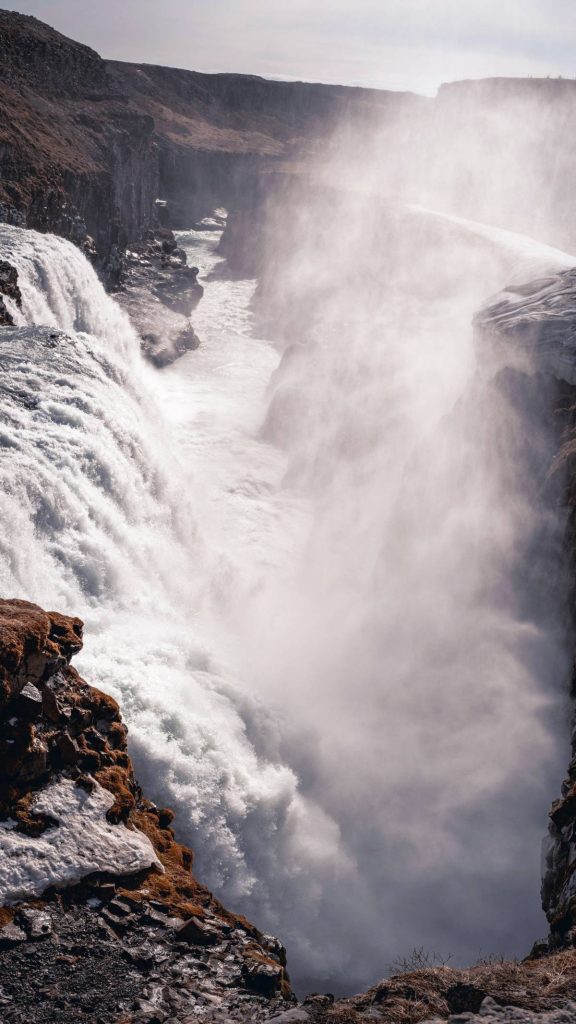The Hvítá (“White River”) is the glacial lifeline of South Iceland and the force that carves the famous tiers of Gullfoss. Born from meltwater at the edge of Langjökull, Iceland’s second-largest ice cap, the river carries fine glacial silt (“glacial flour”) that gives it a distinctive milky hue and remarkable power. From its headwaters near the glacial lake Hvítárvatn, Hvítá runs south through open countryside and basalt canyons before meeting the Sog River near the town of Selfoss. From that confluence, the waters become the Ölfusá, one of Iceland’s largest rivers, which flows to the Atlantic.

Along its course, Hvítá has sculpted a series of dramatic features. The best known is Gullfoss, where the river plunges in two steps into a rugged gorge. Downstream, at Brúarhlöð, centuries of swirling currents have carved potholes and honeycombed cliff faces – an easy roadside stop that shows the river’s erosive artistry up close.
Because Hvítá is glacier-fed, its character changes with the seasons. Summer brings higher, faster flow from snow and ice melt; winter levels drop and the water runs clearer and colder. Sudden thaws or heavy rain can trigger spates at any time of year. This variability is part of the appeal for adventure operators: guided white-water rafting trips run on lower sections below Gullfoss in summer, offering a safe way to experience the river’s energy with experienced guides and proper gear.

Wildlife and plant life along the valley reflect Iceland’s hardy sub-Arctic environment – think mosses, low shrubs, and birdlife that favors open fields and riverbanks. Human history is never far away either: farmsteads, old tracks, and bridges point to how communities have long relied on the river corridor for travel and grazing.
Safety note: Hvítá is powerful, cold, and fast. Banks can be slick, currents deceiving, and water temperatures remain low even in July. Enjoy viewpoints and riverside paths, but avoid entering the water except on organized tours with professional guides.
Whether you meet it as mist at Gullfoss, patterned rock at Brúarhlöð, or rolling current near Selfoss, the Hvítá River is the thread that ties together South Iceland’s landscapes – glacier to ocean in one continuous story of water, light, and stone.
